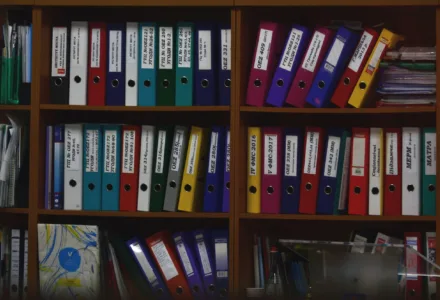What size is the rural enterprise sector?
The government reports that in 2017/18, there were 2,318,060 individual enterprises registered in England. Of these, 23% (544,955) were classed as being rural enterprises. 7.95% of all enterprises were classified as being in rural towns and fringe areas, 7.8% as being in villages, and 7.8% as being based in rural hamlets and isolated dwellings.

The largest sectors that these enterprises operate in, in rural areas are: Agriculture, Forestry and Fisheries (15.2%); Professional, Scientific and technical services (14.8%); Wholesale, Retail and Repair of Motor Vehicles (13%); and Construction (11.9%).
Taking a more local view of Lincolnshire as a rural county, in 2017, there were 26,950 active enterprises registered in Lincolnshire, which was down from 27,035 the previous year. Not all of these enterprises will have been classed as “rural” according to government statistics above, however it is worth understanding how rural/urban classifications have been applied to the county, with individual classifications of the seven districts given below:
| District | Rural-Urban Classification |
| Boston | Urban with Significant Rural (rural including hub towns 26-49%) |
| East Lindsey | Mainly Rural (rural including hub towns >=80%) |
| Lincoln | Urban with City and Town |
| North Kesteven | Mainly Rural (rural including hub towns >=80%) |
| South Holland | Largely Rural (rural including hub towns 50-79%) |
| South Kesteven | Largely Rural (rural including hub towns 50-79%) |
| West Lindsey | Mainly Rural (rural including hub towns >=80%) |
Of these 26,950 Lincolnshire enterprises, 2,735 (10%) of them were classed as “new” in 2017, compared to 3,145 in 2016. The latest figures on the survival rate of new enterprises in the county are from 2014, and report that as of that date, 60.31% of start-up enterprises survived their first three years in business. Figures show that 3,010 Lincolnshire businesses folded in 2017, up from 2,875 in 2016.
What sectors do Lincolnshire enterprises cover?
In Lincolnshire as a whole in 2017, the five largest sectors for local businesses were:
- Agriculture, Forestry and Fishing
- Construction
- Professional, Scientific and Technical
- Transport & Storage
- Retail

On a more local level, the four biggest sectors for local businesses for each of the districts are shown below, with Agriculture, Forestry and Fishing, Construction, Professional, Scientific and Technical and Retail featuring heavily across all districts.
| District | Largest Sectors by number of Enterprises |
| Boston | · Agriculture, Forestry and Fishing
· Transport & Storage · Construction · Retail |
| East Lindsey | · Agriculture, Forestry and Fishing
· Construction · Accommodation and Food Services · Retail |
| Lincoln | · Professional, Scientific & Technical
· Construction · Retail · Accommodation and Food Services |
| North Kesteven | · Construction
· Professional · Agriculture, Forestry and Fishing · Transport & Storage |
| South Holland | · Transport & Storage
· Agriculture, Forestry and Fishing · Construction · Professional, Scientific & Technical |
| South Kesteven | · Professional, Scientific & Technical
· Construction · Agriculture, Forestry and Fishing · Retail |
| West Lindsey | · Agriculture, Forestry and Fishing
· Construction · Professional, Scientific & Technical · Production |
The challenges faced by rural businesses
Distance – in Lincolnshire, as the second largest county in England, travelling from one end of the county to the other can take up to two hours, depending on the road conditions and the number of ever present tractors on the road. This time can be significantly increased when traveling ion the smaller roads during harvest times. The time spent travelling can rarely be utilised for anything other than travel, with most residents and workers in the county reliant on their cars to get around. This has a big impact on productivity by lessening the number of meetings, appointments and deliveries that can be done in one day.
Transport costs – Linked to the distance of places in Lincolnshire from anywhere else, and the fact that Lincolnshire itself does not play host to any of the UK’s motorway network, nor does it boast its own airport, transport costs for businesses in the county have the potential to be significantly higher than those of businesses in urban, or even in better connected rural areas. In some cases these costs are an inevitable by-product of doing business in a rural area, rendering the impact on their profit margins an unavoidable consequence.
Weather conditions – When a large number of enterprises in an areas are working the construction, agriculture and transport sectors, changes in the weather can have a huge impact on the productivity of the region. Prolonged periods of any type of weather can be harmful for the agricultural industries, resulting in poor yields and periods of time when workers are unable to be productive. Across all rural businesses, adverse weather in winter can disrupt supply chains, and leave workers cut off from their workplaces when snow or flooding occur.
Disease – Businesses in rural areas are more at the mercy of outbreaks of diseases such as Foot and Mouth than their urban counterparts, with outbreaks often resulting in the destruction of livestock, and quarantines being put in place around infected areas. The social and economic impact that this can have on the businesses in these areas is enormous.
Lack of Digital Connectivity – Whether through choice (older populations have a tendency to favour digital solutions less than their younger colleagues), or through lack of access to broadband and 4G services, a lack of connectivity can impact an enterprise’s ability to utilise helpful, and sometimes critical, technology.
Ways to counteract these challenges
Moving towards doing more business via online methods can help to reduce the transport times and costs faced by a rural business, whether by reducing the number of journeys made to attend meetings through the use of online conferencing apps, or selling products online to customers. In order for this to happen, businesses need to have both the technical skills and digital connectivity to support their activities.
Where face to face events are required, accommodating long travel times of attendees by using centralised locations, or having later start/earlier finish times. It could also be helpful to share details of public transport routes where possible to enable staff to reduce their carbon footprint, whilst also giving them the opportunity to be more productive on the journey. Encouraging car sharing can also be a helpful way of cutting down on the financial and environmental costs of work travel.
Looking out for funding sources that are aimed at rural businesses, such as the Rural Development Programme for England. These can help by providing support to counteract the difficulties that are faced by rural businesses that do not impact so greatly on their urban counterparts.
Diversifying the products, services and customer touch points on offer. This can help to lessen the blow when a particular output is adversely affected, for example by bad weather.
Being clear on your business offer and your target audience in order to save time and effort in pursuing avenues that are not in keeping with your business plan.
Supporting and encouraging investment in infrastructure and digital infrastructure.
(All data references taken from:
https://www.research-lincs.org.uk/Economy.aspx
https://www.gov.uk/government/... )
Related Posts

Visits to BGU from Innovate UK

LORIC Wraps Up Successful SED Project

Innovate UK’s East Midlands Knowledge Exchange Forum hosted on BGU campus!

Understanding the Economic Impact and Future Potential of Greater Lincolnshire’s Sport, Physical Activity & Leisure Sector

LORIC Wins Venue of the Year Award

Digitising the Archive of the 20th Century Philosopher John Macmurray
